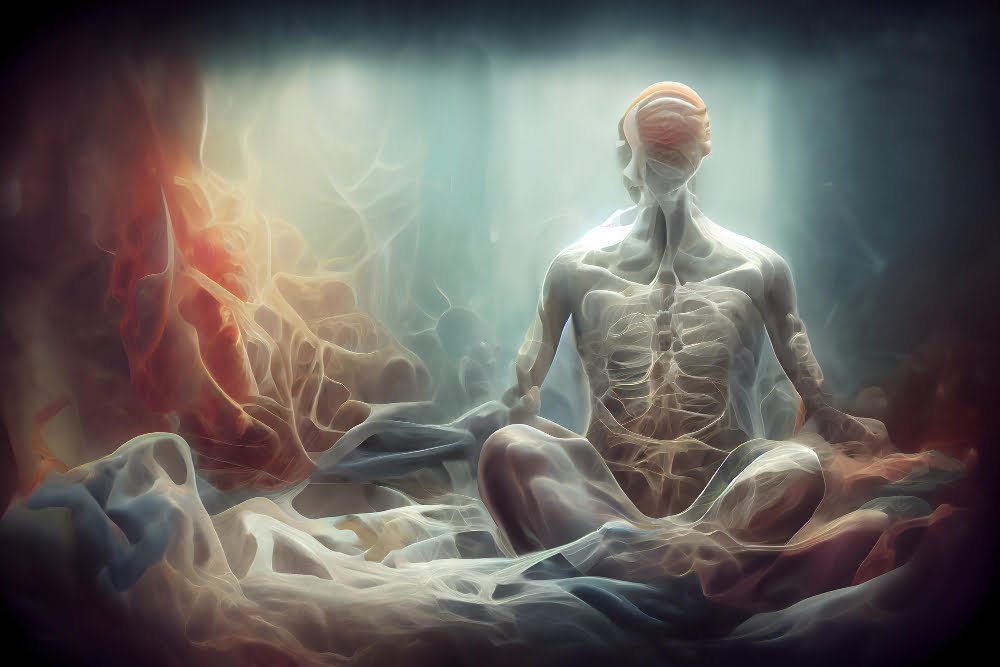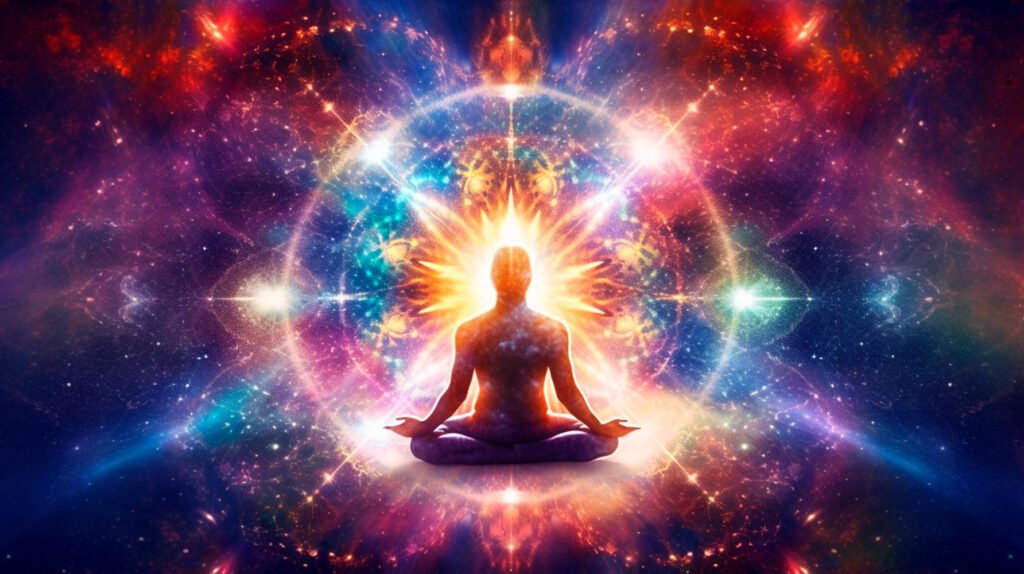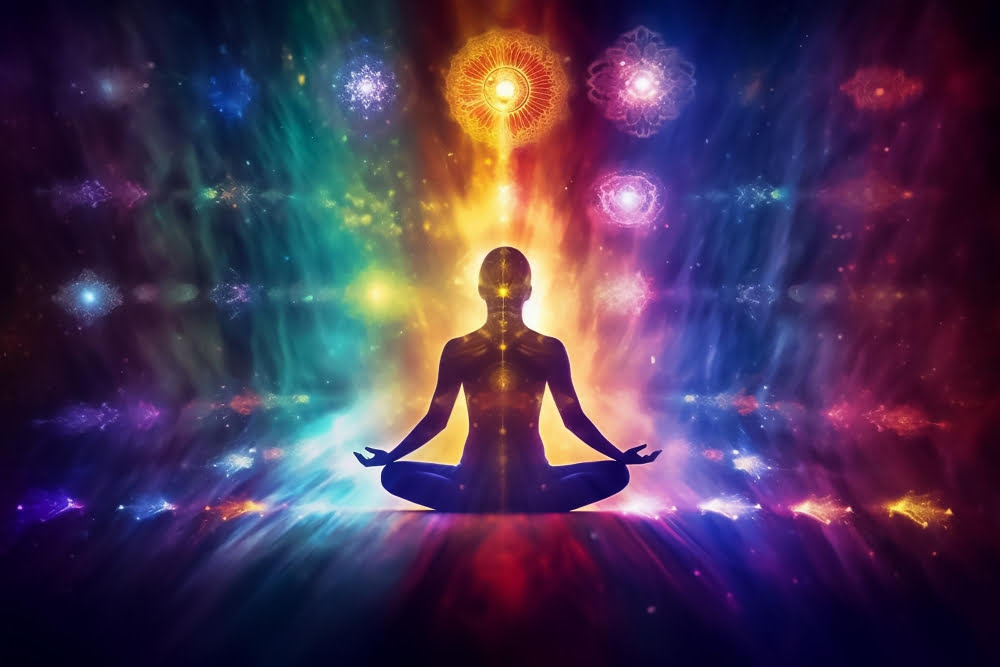Embark on a journey into understanding DMT meditation, because it unlocks the power of your subconscious, offers profound spiritual insights, and promotes holistic well-being.
DMT meditation refers to a unique practice that combines meditation with DMT, a naturally occurring psychedelic substance, to enhance spiritual awareness and promote deep self-exploration.
This practice is gaining popularity among those who seek a profound understanding of their consciousness and the universe.
In this article, we delve into the depths of DMT meditation, exploring its origins, benefits, and how to practice it safely.
We also address common questions and misconceptions, ensuring you get a comprehensive understanding of this intriguing form of meditation.
Let’s embark on this enlightening journey together.
Key takeaways:
- DMT meditation combines meditation with the psychedelic substance DMT.
- DMT meditation can enhance spirituality and promote well-being.
- DMT has psychoactive properties similar to serotonin.
- DMT meditation involves deep breathing, visualization, and intention-setting.
- DMT meditation can lead to deep relaxation, mystical experiences, and self-awareness.
Definition and Explanation of DMT Meditation

DMT (Dimethyltryptamine) meditation is a practice that integrates the potentially psychedelic experiences brought on by DMT with mindful meditation. This powerful compound, often referred to as “The Spirit Molecule,” naturally occurs in plants and the human body but can be synthesized for use in controlled settings.
In this context, meditation serves as an essential tool for grounding the mind amid DMT’s often intense physical and mental effects. Rather than attempting to control the experience, the meditator embraces an attitude of open acceptance and observance.
The intent is to attain profound insights into oneself and the universe, heightening spirituality and fostering an overall sense of wellbeing. However, it’s vital to approach DMT meditation with proper knowledge and respect given its potent influences on consciousness.
The Science Behind DMT

Distilled from certain plants and animals, DMT, also known as N,N-Dimethyltryptamine, is a naturally occurring chemical that has psychoactive properties.
Indeed, DMT’s profound impact originates from its structure being similar to serotonin, a neurotransmitter that significantly influences mood, anxiety, and happiness levels.
Upon administration, DMT swiftly reaches the brain, where it links strongly with serotonin receptors.
This results in the activation of parts of the brain correlated with dreaming and imagination.
Though DMT is broken down quickly in the body, its effects during that brief span can be very intense, often featuring perceived encounters with otherworldly entities or deep-rooted epiphanies.
DMT naturally exists in the human body in minimal amounts.
Certain practices, like deep meditation or yogic techniques, can potentially stimulate its production, although this is still a topic of ongoing research.
It’s paramount to remember that the usage of synthetic DMT outside a legal or supervised context can carry significant risks, both physically and legally.
How DMT Meditation Works

In its essence, DMT meditation activates the body’s natural reserves of DMT, a potent psychedelic compound that is said to induce intense experiences. This process is much more than just sitting quietly; it involves a combination of focused breathing, visualization, and an intention-setting practice.
1. Deep and Rhythmic Breathing: This is essential to shift your brain into a state of relaxation, a prerequisite for the DMT release. Deep breaths send signals to your body that it’s time to relax, thereby facilitating the process.
2. Visualization: Visualization practices help harness your imagination to support your meditation. Imagine your body being filled with radiant light or visualize releasing attachment to worldly matters. Some practitioners envision the DMT molecule itself.
3. Intention-setting: Just before starting the meditative practice, it can be beneficial to set a clear intention. This could be anything from seeking answers to specific questions, achieving a more profound comprehension of one’s existence, or merely having a positive experience.
4. Achieving Trance State: The continuous practice of focused breathing and visualization, coupled with intention-setting, leads to a trance-like state, promoting the release of endogenous DMT.
Remember, while the brain reportedly produces DMT during meditative states, one must approach this type of meditation with caution and openness to fully experience it. It requires practice, patience, and importantly, an experienced guide.
Historical and Cultural Context of DMT

Teetering between the material and metaphysical, DMT, or Dimethyltryptamine, has long held a significant place in traditional cultures, particularly within South America. Indigenous Amazonian tribes underlined their spiritual quests by harnessing the power of DMT through a brew called Ayahuasca. Used in religious and healing rituals, Ayahuasca provided a bridge to the spiritual world, fostering intense visions and introspective experiences.
Meanwhile, on the other side of the globe in the mid-20th century, the West was getting their first glimpse, and feel, of DMT with its synthesis by British chemist Richard Manske in 1931. However, it wasn’t until the 1950s that Hungarian chemist, Stephen Szára, discovered DMT’s psychotropic properties.
These cultural contexts help trace the journey of DMT from the thick foliage of the Amazon forest to the controlled setting of a laboratory. Integral to navigating debates surrounding the substance, they highlight the shifting landscapes of spiritual exploration and therapeutic interventions.
The Relationship Between DMT and Spirituality

Comprehending the deep-seated connection between DMT and spirituality requires an inspection of multiple dimensions, including its mystical experiences and profound inner journeys.
1. Mystical Experiences: Users often report encounters with divine entities or landscapes that extend beyond our everyday physical world. This transcendent quality aligns with many spiritual philosophies where deeper realities exist beyond our usual perceptions.
2. Profound Inner Journeys: People under DMT influence often embark on inward voyages that unfold profound understandings about themselves and the universe, reflecting the spiritual notions of self-discovery and interconnectedness.
3. Ego Dissolution: A common experience is the dissolution of the ego or sense of self. This aligns with spiritual teachings advocating the concept of oneness and liberation from a separate sense of self.
4. Therapeutical Potential: Many users have found relief from psychological or spiritual distress after their DMT experiences. This ties into the spiritual practices’ therapeutic dimension, where healing and transformation are central elements.
Understanding this complex connection may help in scientifically studying spiritual experiences and further employing DMT in therapeutic contexts. Remember, though its use remains controversial, it has the potential to open new horizons in our understanding of the spiritual realm.
Proper Preparation for DMT Meditation Session

Paying careful attention to set and setting considerably enhances the potential benefits of a DMT meditation session. It’s ideal to meditate in a peaceful, comfortable space, free from disruptions or potential distractions.
Shedding anxieties or worries and creating an intention for the session helps achieve a more fruitful experience. This shift in mindset often leads to a smoother exploration during the meditation.
Maintaining optimal physical health in the days leading to the session ensures an effective meditation process. Proper rest, a well-balanced diet, and regular physical exercise contribute greatly to achieving this state.
Be mindful of timing. Schedule your DMT meditation session when you have ample time to experience the journey without hurry, giving the body enough time to rest and process the experience afterward.
Finally, it’s beneficial to seek guidance from a qualified and experienced professional. Their insights can enrich the experience, ensuring you navigate the journey safely and meaningfully.
Detailed Process of DMT Meditation

To delve into the intricacies of this form of meditation, it’s crucial to highlight these key steps:
- Set Up: Choose a calming environment, free from distractions. Maintain a comfortable sitting position, with relaxed but steady posture.
- Breathing: Deep and rhythmic breathing is fundamental to ease into the meditative state. Gradually slow down your breathing, focusing on each inhalation and exhalation to nurture mindfulness.
- Intent Setting: Reflect on your purpose for this session. This could be personal transformation, insight, or spiritual connection. Holding a clear intention could guide the pathways your mind explores.
- Visualization: Envisage the DMT release, picturing it as a flow of energy within you. This imagined narration might stimulate the actual process.
- Surrender: As powerful images and sensations start to emerge, surrender to the experience. Do not resist; let your consciousness ride the wave of DMT, embracing whatever thoughts or perceptions surface.
- Return: Gently guide your consciousness back after the peak of your meditative journey. Use your breath as a grounding anchor, gradually reconnecting with your physical surroundings.
The DMT meditation process is reflective in nature, encouraging introspective exploration. It’s crucial to approach it with an open, accepting mindset, allowing the session’s revelations to enrich your personal understanding.
Effective Techniques for DMT Meditation

Every technique requires specific attention and practice, and DMT meditation is no exception. Here are some crucial techniques that can guide a more effective session:
- Set Intentions: Clear, focused intentions send a powerful signal to the mind, creating a guiding force throughout the meditation.
- Relax the Body: Begin by releasing tension in the body. A relaxed body encourages a state of calm, crucial for the immersive experience.
- Controlled Breathing: Pranayama, or breathing exercises, can help to calm the mind and prepare it for the meditation.
- Safe Setting: Create a soothing environment, perhaps dim the lights, play soft music, or set up incense, aiding in the relaxation and immersive process.
- Use of Mantras: Repeating certain mantras can bring focus, aiding in the release of mental chatter.
- Allowing Release: Letting go of expectations and surrendering to the experience will enhance the potentials of the practice.
By adapting these techniques, it allows an individual to potentially explore profound depths of consciousness during the DMT meditation.
Potential Benefits and Risks of DMT Meditation

Delving into the realm of DMT meditation offers a set of unique advantages while also presenting certain challenges and implications. Understanding these facets may provide a clearer insight into the overall practice.
Benefits:
- Achieving Deep States of Relaxation: Regular practitioners often report deep feelings of internal calm and relaxation, reduced anxiety, and a notable decrease in stress.
- Profound Mystical Experiences: DMT meditation can lead to intense, transformative mystical and spiritual experiences often characterized by personal growth and spiritual learning.
- Enhancing Self-Awareness: It prompts introspection and a more profound understanding of one’s self, aiding in personal development.
Risks:
- Intense Experiences: The induced states can be overwhelming and disorienting. Not everyone finds these experiences pleasant.
- Set and Setting: One’s mindset and the surrounding environment play essential roles in determining the experience’s nature. A negative mindset or a disturbing environment can potentially lead to adverse reactions.
- Possible Psychological Risks: It might incite psychological distress or worsen pre-existing psychiatric conditions.
Remember, it’s crucial to approach DMT meditation with a balanced and, ideally, guided method to maximize benefits and minimize potential downsides. Safety should always be the primary concern in these practices.
Understanding DMT: The Spirit Molecule

DMT, short for Dimethyltryptamine, is a naturally occurring psychedelic compound found in many plants and even in the human body, earning its nickname “The Spirit Molecule.” It plays a key role in enhancing the intensity of dreams and facilitating extraordinary experiences during deep meditation.
1. The compound can induce temporary yet intense changes in perception, mood, and thought when introduced at higher concentrations.
2. Contrary to popular belief, DMT isn’t exclusively found in external sources. Research suggests that our brains produce this compound, making it intrinsic to human consciousness.
3. Its production is often associated with heightened spiritual experiences. For many, these encounters offer profound insights and spark introspective explorations.
4. When DMT levels rise, individuals can experience vivid, dreamlike states. This effect is why it’s integral to the unique experience of DMT meditation.
5. The presence of DMT in multiple plants underscores its evolutionary significance and potential anthropological relevance. Its transformative impact hints at an inherent relationship between humans and the natural world.
Remember, while the spiritual exploration fostered by DMT can be enlightening, it’s essential to approach this heady compound with respect and mindfulness.
Personal Experiences and Case Studies On DMT Meditation

Personal experiences with DMT Meditation can vary greatly from person to person. Some meditators recount profound spiritual insights, while others report intense visual and sensory encounters. It’s common to hear individuals describe feelings of interconnectedness with all things, cosmic unity, or timeless existence.
Several case studies also provide deeper insights. For instance, a study by Johns Hopkins University found that, out of 50 participants, nearly 70% experienced significant psychological improvements after using DMT meditation. They reported enhanced mood, increased energy, and decreased anxiety and depression.
Another noteworthy study published in the Journal of Psychopharmacology reported that DMT-induced experiences can lead to long-term improvements in satisfaction with life, mindfulness, and a decrease in death anxiety.
While these experiences can be powerful, they can also be stormy. A minority of users report experiences of fear and panic during DMT meditation. It’s essential to proceed with caution, with a thorough understanding and respect for the potency of the practice.